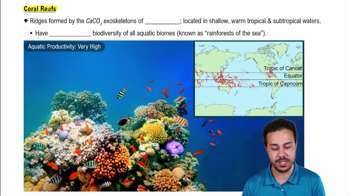Which of the following groupings includes the largest number of species? (Explain your answer.)
a. Invertebrates
b. Arthropods
c. Insects
d. Vertebrates
 Verified step by step guidance
Verified step by step guidance Verified video answer for a similar problem:
Verified video answer for a similar problem:



 8:01m
8:01mMaster Arthropods and Chelicerata with a bite sized video explanation from Jason
Start learning